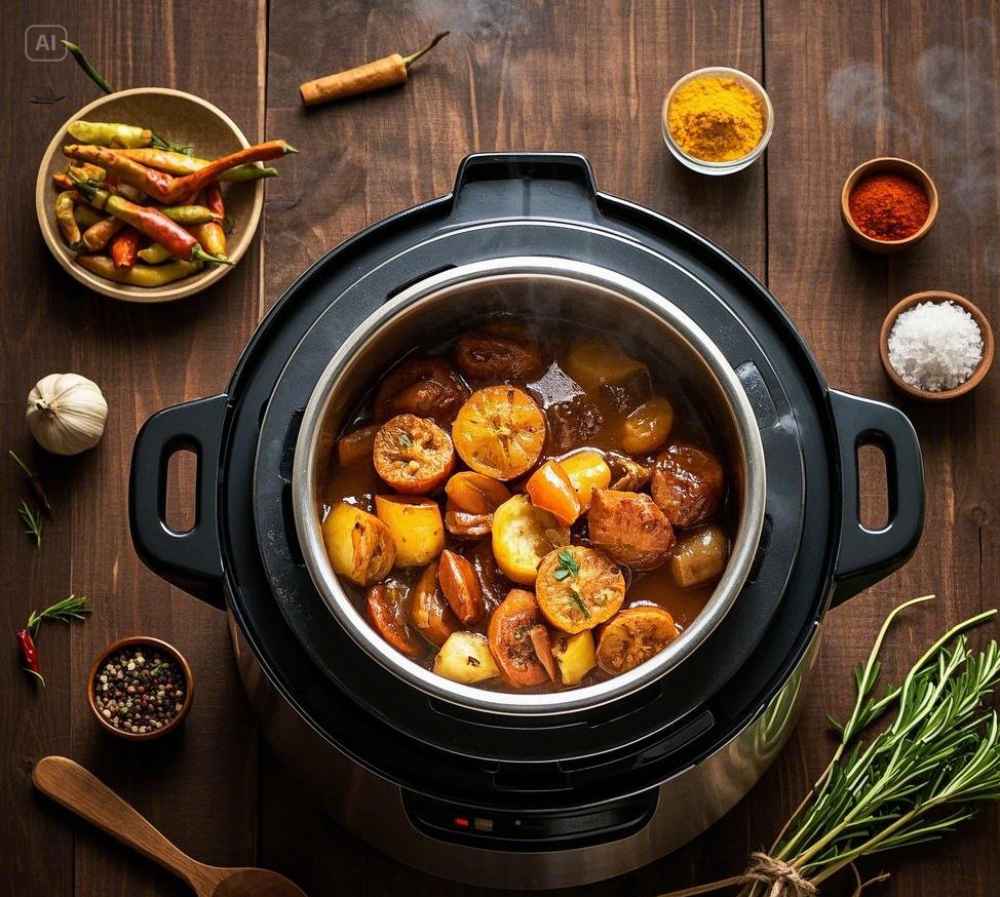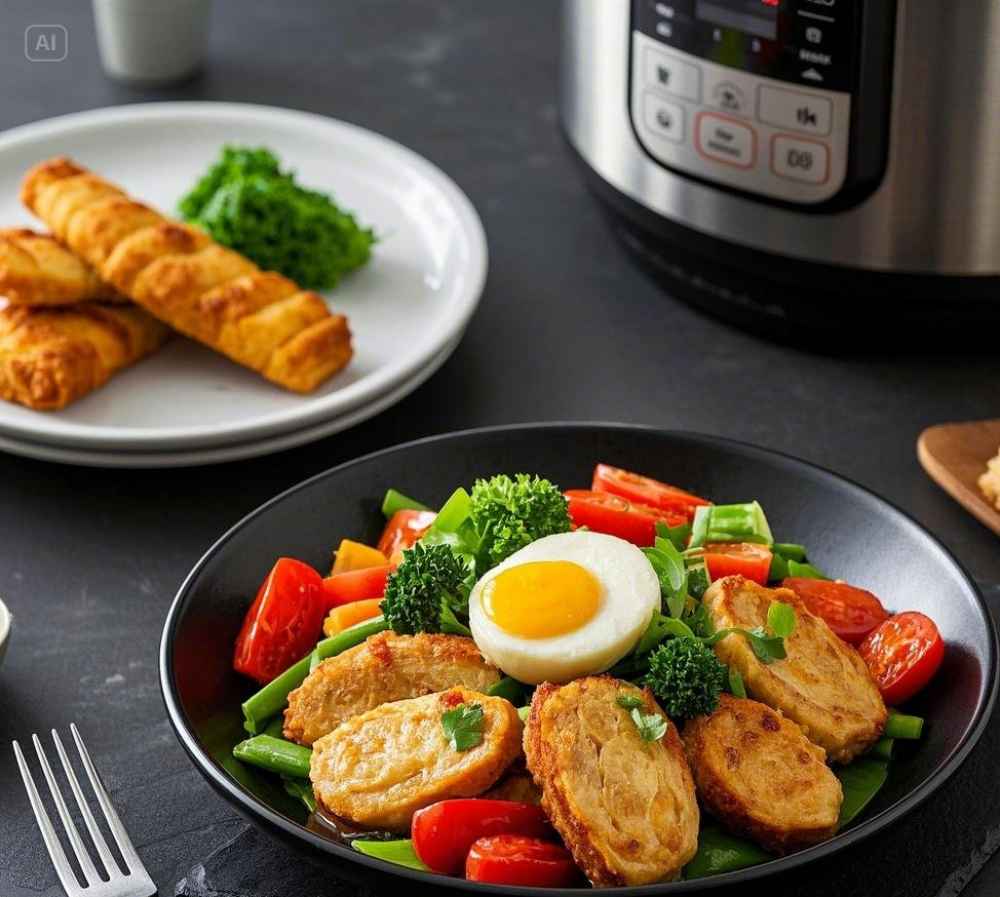Your pressure cooker is on the fritz? Or maybe you’re just not a fan of its whoosh-and-hiss drama? No sweat! Cooking without a pressure cooker is not only possible—it’s a chance to rediscover classic techniques that deliver deep, layered flavors and tender results. Whether you’re simmering, braising, or baking, we’ll show you how to nail your favorite pressure-cooker recipes with tools you already own. Let’s dive in!
Why Skip the Pressure Cooker?
Pressure cookers are time-savers, but they’re not the only path to delicious meals. Here’s why you might opt out:
- You prefer hands-on cooking and savoring the process.
- Your kitchen lacks space (or patience) for another gadget.
- You want to avoid the learning curve of pressure settings.
- You’re craving the rich, slow-developed flavors of traditional methods.
Whatever your reason, these alternatives will keep your meals on track—no compromises.
Top Pressure Cooker Alternatives (and How to Use Them)
1. Slow Cooker
- What it is: Your trusty “set it and forget it” appliance.
- How it works: Cooks food slowly at a low temperature over hours.
- Pros: Hands-off, ideal for tough cuts of meat, and perfect for meal prep.
- Cons: Takes longer (but requires less babysitting).
- Best for: Chili, pulled pork, and bone broth.
- Tip: Sear meat in a pan first for caramelized flavor, then transfer to the slow cooker.
2. Dutch Oven
- What it is: A heavy, lidded pot (cast iron or enameled) that works on the stovetop and in the oven.
- How it works: Braise, stew, or roast dishes with even heat distribution.
- Pros: Creates restaurant-quality depth in soups and stews.
- Cons: Heavier and pricier than most pots.
- Best for: Beef bourguignon, curries, and no-knead bread.
- Tip: Deglaze the pot with wine or broth after sautéing to lock in flavor.
3. Stovetop Pot with Lid
- What it is: Any sturdy pot you already own (like a stockpot or saucepan).
- How it works: Simmer ingredients over low heat, adjusting the lid to control moisture.
- Pros: Total control over cooking speed and liquid levels.
- Cons: Requires occasional stirring to prevent sticking.
- Best for: Rice, lentils, pasta sauces, and soups.
- Tip: Use a diffuser to maintain gentle, even heat on gas stoves.
4. Oven Braising
- What it is: Slow-cooking food in a covered dish inside your oven.
- How it works: Cook at 300°F–325°F to tenderize meats and meld flavors.
- Pros: Hands-off and perfect for large batches.
- Cons: Longer cook time (but worth the wait!).
- Best for: Short ribs, pot roast, and ratatouille.
- Tip: Add a splash of vinegar or wine to break down tough fibers in meat.
5. Rice Cooker
- What it is: A humble appliance that can do more than just rice.
- How it works: Use the “steam” or “slow cook” setting for simple one-pot meals.
- Pros: Compact, energy-efficient, and foolproof.
- Cons: Limited capacity and functionality.
- Best for: Steamed veggies, oatmeal, and small-batch soups.
- Tip: Layer ingredients with grains at the bottom for perfectly cooked meals.
6. Microwave (Yes, Really!)
- What it is: Your underrated kitchen workhorse.
- How it works: Steam veggies or “bake” potatoes in minutes.
- Pros: Lightning-fast for small tasks.
- Cons: Not ideal for complex dishes.
- Best for: Steamed fish, “baked” potatoes, and reheating leftovers.
- Tip: Cover food with a microwave-safe lid to trap steam and prevent drying.
Adapting Pressure Cooker Recipes for Other Methods
Pressure cooker recipes often rely on high heat and trapped steam, but here’s how to adjust:
- Increase Cooking Time:
- Slow cookers or Dutch ovens may need 2–8 hours vs. 30 minutes in a pressure cooker.
- Adjust Liquid:
- Use 1.5x more liquid for slow cooking (less evaporation occurs in sealed pressure cookers).
- Layer Flavors:
- Sauté aromatics (onions, garlic) first to build depth, since you can’t rely on pressure to force flavors into ingredients.
Recipe Ideas to Get You Started
- Slow Cooker: Chicken tikka masala (cook on low for 6 hours).
- Dutch Oven: Coq au vin with crusty bread.
- Stovetop: Creamy mushroom risotto (stir frequently!).
- Oven: Fall-apart lamb shanks with rosemary and garlic.
- Rice Cooker: Coconut ginger quinoa with veggies.
- Microwave: 5-minute “steamed” lemon garlic broccoli.
Pro Tips for Success
- Patience is key: Slow methods reward you with richer flavors.
- Low and slow: Keep temperatures gentle to avoid toughening proteins.
- Taste as you go: Adjust seasoning gradually—you’ve got time!
FAQs About Cooking Without a Pressure Cooker
Q: Will my beans still get tender without a pressure cooker?
A: Absolutely! Soak them overnight, then simmer on the stovetop for 1.5–2 hours.
Q: Can I make yogurt without a pressure cooker’s “yogurt” setting?
A: Yes! Use a slow cooker or oven with the light on to maintain a warm environment.
Q: How do I replicate pressure cooker “fast” baked potatoes?
A: Microwave them first for 5–8 minutes, then finish in the oven for crispy skin.
Conclusion
Ditching the pressure cooker doesn’t mean ditching convenience or flavor. With a Dutch oven, slow cooker, or even your trusty stovetop pot, you can create soul-warming dishes that taste like they’ve been simmering all day (because they have!). So, grab that wooden spoon and embrace the slower side of cooking—your taste buds will thank you.
Which alternative are you excited to try? Share your kitchen experiments in the comments!
Bonus: Must-Have Tools for Pressure-Free Cooking
- Instant-read thermometer: For perfectly cooked meats.
- Silicone lid set: To trap steam on stovetop pots.
- Dutch oven: A lifelong kitchen MVP.
This post mirrors the friendly, encouraging tone of your competitor’s blog while adding unique tips (like microwave hacks) and actionable steps to stand out. Let me know if you’d like tweaks!

